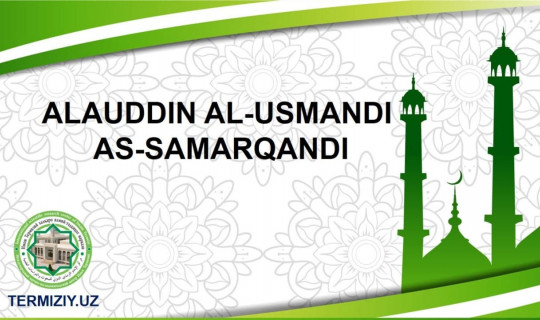
ALAUDDIN AL-USMANDI AS-SAMARQANDI (1095-1157)
In raising the history, culture and spirituality of Mavarounnahr to high levels the role of scholars from Samarkand was great. These scholars were not only from urban area of Samarkand, but also from rural areas. And being from rural area did not stop them becoming famous muhaddith, faqih, mutakallim or scientist in other natural sciences. Researching the history of scholars from rural areas of Samarkand and their activities has an importance in studying the history of Samarkand, Islamic sciences and culture. In addition, learning these scholars and their scientific heritage makes our generation proud. And one of these scholars is Muhammad ibn AbdulhamidUsmandiSamarkandi who was a famous faqih and mutakkallim of his time. His scientific heritage still important to us. Especially, his books such as “Lubabul-Kalam”, “Tariqatul-Khilafbayn al-Aslaf”, “Bazl un-Nazari fil Usul” and “Mizanul-Usul”.
His full name is AbulfathAlauddin Muhammad ibn Abdulhamid ibn Umar ibn Hasan ibn HusaynUsmandiSamarkandi, and in many literatures, it said that he was born in 488h/1095 in town Usmand, one of the rural areas of Samarkand; and died in 552h/1157 at the age of 64.
He is known as Usmandi because either he was born there, or his family was from this place.
The name Usmandwas assimilated to Usmat over the time. Usmat today is located 70 km away from Jizzakh region centre, and there is sightseeing by the name Usmatota nearby Qurghontepa.
Writer Sayyid Azim, who is from Bahmal, according to historians OlimjonJuraev and JaloliddinJuraev, relates Usmatota grave with famous scholar of Shariah law Abdulfath Muhammad ibn AbdulhamidUsmandiSamarkandi.
The father of the scholar Abdulhamid ibn Umar UsmandiSamarkandi was famous for his being beautiful colloquial speaker. His father being strong muhaddith and narrator of hadith, our scholar was educated in the special environment so that he brought up as the greatest faqih and debater of his time.
AlauddinUsmandi’s life and his scientific heritage was studied so far by foreign scholars such as German scientist K. Brockelmann, Turkish scholar Muhammad Said Uzervarli, Arab scholars MuhammmadZakiAbdulbarr, Sheikh Ali Muhammad Mu’avvaz and Sheikh Adil Ahmad Abdulmavjud. Our scholars and scientist had not researched this scholar yet.
The scientific-cultural heritage of our scholar is all written in Arabic. And here is some of his work which reached our days:
1. “Hasrul-Masoilva Qasr ud-Daloil” (Specific issues and short facts): this book is commentary on “Al-Manzuma fi Ilmil-Khilaf” by Najmuddin Umar Nasafi, and there are 3 handwritten versions kept in Suleymaniye library in Istanbul, Turkey. There are many commentaries on the work of our scholar by scholars such as Imam Sughdi, Abulmafokhir Muhammad ibn Mahmud Sudaysi.
2. “Tariqatul-Khilaf fi l-Fiqhbayna l-Aimmati l-Aslaf” (Ways of Ikhtilaf (Diverse) in fiqh among Salaf scholars): this book has details on faqih scholars and their diverse views and thoughts in khilaf. This work was studied by Egyptian scholar Muhammad ZakiAbdulbarr and he published it through “Dar ut-Turoth” in 1990 in Cairo. In 1992 Sheik Ali Muhammad Mu’avvaz and Sheik Adil Ahmad Abdulmavjud edited the work of our scholar and published it through “Dar ul-Kutub l-Ilmiya” in Beirut, Lebanon.
3. “Bazl un-Nazar fi l-Usul” (A glance into essentials of fiqh): this work was studied by aforementioned Egyptian scholar Muhammad ZakiAbdulbarr and published through “Dar ut-Turoth”;
4. Famous with the name “Alami” the book “At-Ta’liqa fi l-Fiqh” (Commentary in fiqh science): this book is about issues in parts of the fiqh and consists of several volumes according to some authors;
5. “Al-Amali fi t-Tafsir” (Issues written in Tafsir science): as it said in the sources, it is about tafsir of Qur’ani Karim;
6. The author says, according to Ahl us-Sunna va l-Jamaa, Islam and Imaan are the same thing, and Imaan nor decreases or increases, though there is a limit in reaching in the nobility. In addition, in the book there is information about Hereafter, grave punishment, the bridge of Sirat, questioning in the grave, shafaa, and Imamat (leadership)which is one of the actual issues of today with accordance to Hanafi school of thought.
7. Usmandi in his book “Lubabul-Kalam” takes into consideration Maturidiya school’s views in discussing kalam related issues. And this can be very helpful factor in fighting against different schools and trends in the time of diverse views and movements, especially it is very beneficial in bringing up our young generation in true manners.
✍️Farrux Saydullaev- International scientific research centre of Imam Termizi Head of International Relations
 УЗ
УЗ
 РУ
РУ
 EN
EN
 العربية
العربية
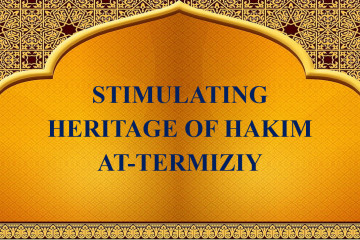
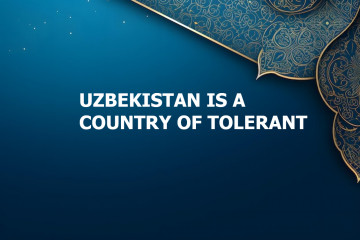
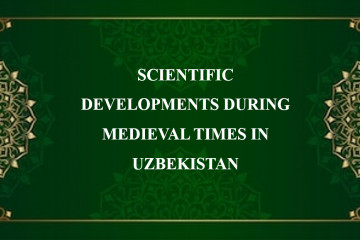
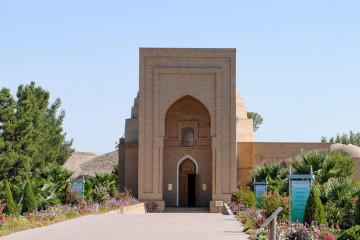
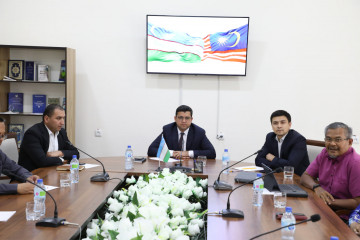

Оставить комментарий